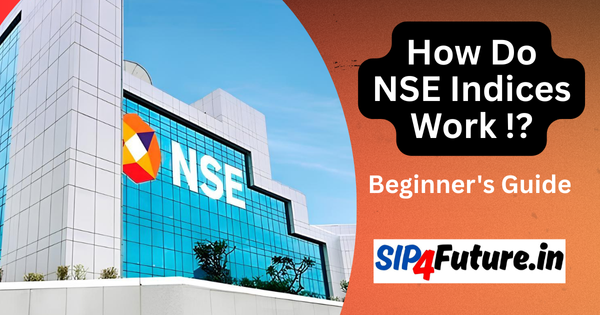Mahindra Lifespace Developers Ltd, a key player in India’s real estate sector, has released its financial results for Q4 and FY25, revealing a complex performance marked by robust sales growth and significant challenges in revenue and profitability. The company, known for its premium residential projects and integrated developments under brands like Mahindra World City, continues to navigate a dynamic market influenced by government policies, global economic trends, and sector-specific hurdles. This article dives into the company’s financials, stock performance, and the broader factors shaping its trajectory, offering a comprehensive analysis for investors and stakeholders.
What Drives Mahindra Lifespace’s Financial Performance?
Mahindra Lifespace Developers operates in two primary segments: residential real estate and integrated cities and industrial clusters (IC&IC). Its residential portfolio includes premium projects and value homes under the Mahindra Happinest brand, while its IC&IC business focuses on large-scale developments like Mahindra World City and Origins by Mahindra. In FY25, the company achieved notable milestones, particularly in pre-sales, but faced headwinds in revenue recognition and profitability.
Q4 FY25: A Snapshot of Resilience
In Q4 FY25, Mahindra Lifespace reported a 19% increase in net profit to Rs 85.09 crore, up from Rs 71.48 crore in Q4 FY24, reflecting improved operational efficiencies and higher-margin project completions. Revenue for the quarter grew by 18.89% to Rs 158.60 crore, driven by steady demand for residential projects. However, sale bookings dipped by 3% to Rs 1,055 crore, indicating a slight slowdown in quarterly momentum. A significant boost came from other income, which surged by 424.21% to Rs 149.40 crore, likely from non-core activities or one-time gains.
| Metric | Q4 FY25 | Q4 FY24 | YoY Change |
|---|---|---|---|
| Net Profit (Rs Cr) | 85.09 | 71.48 | +19.00% |
| Revenue (Rs Cr) | 158.60 | 133.40 | +18.89% |
| Sale Bookings (Rs Cr) | 1,055.00 | 1,087.00 | -3.00% |
| Other Income (Rs Cr) | 149.40 | 28.50 | +424.21% |
FY25 Annual Performance: Growth Amid Challenges
For the full fiscal year, Mahindra Lifespace showcased 20% growth in pre-sales, reaching Rs 2,804 crore, driven by successful project launches like Vista Ph2, IvyLush, Zen, and Green Estates. Total income rose to Rs 463.87 crore, up 66.2% from FY24, reflecting strong operational momentum. However, total revenue plummeted by 57.69% to Rs 279.10 crore, and net profit declined to Rs 60.94 crore from Rs 97.95 crore, highlighting challenges in revenue recognition and cost pressures.
| Metric | FY25 | FY24 | YoY Change |
|---|---|---|---|
| Net Profit (Rs Cr) | 60.94 | 97.95 | Decline |
| Total Revenue (Rs Cr) | 279.10 | 659.70 | -57.69% |
| Pre-Sales (Rs Cr) | 2,804.00 | 2,330.00 | +20.00% |
| Total Income (Rs Cr) | 463.87 | 279.12 | +66.20% |
The company’s gross development value (GDV) additions were a highlight, soaring to Rs 18,100 crore in FY25, four times higher than FY24, positioning Mahindra Lifespace to achieve its ambitious target of Rs 8,000–10,000 crore in sales by FY30. Strategic land acquisitions, such as a 37-acre parcel in Mumbai’s Bhandup with a GDV of Rs 12,000 crore, further bolstered its pipeline.
How Does the Real Estate Sector Impact Mahindra Lifespace?
The Indian real estate sector is a critical driver of Mahindra Lifespace’s performance, shaped by demand for residential and industrial properties, regulatory changes, and economic conditions. In FY25, the sector witnessed strong tailwinds in mid-premium and premium residential segments, fueled by rising urbanization and disposable incomes. Mahindra Lifespace capitalized on this trend, achieving 77% pre-sales growth in H1 FY25 and securing high-demand projects in cities like Mumbai, Pune, and Bengaluru.
However, challenges such as delayed project approvals and execution timelines impacted revenue recognition, as seen in the 57.3% revenue drop in Q2 FY25. The company’s focus on premium segments and disciplined capital allocation, as emphasized by CEO Amit Kumar Sinha, aligns with market trends but requires efficient project execution to translate pre-sales into revenue.
Government Decisions Shaping the Sector
Government policies play a pivotal role in the real estate sector’s growth. Initiatives like the Pradhan Mantri Awas Yojana (PMAY) and incentives for affordable housing have spurred demand, indirectly benefiting developers like Mahindra Lifespace through its Happinest brand. Additionally, favorable policies for industrial development, such as the Production Linked Incentive (PLI) scheme, have boosted demand for Mahindra Lifespace’s IC&IC projects, with 34.9 acres leased in H1 FY25 for Rs 163.2 crore.
However, regulatory hurdles, including delays in environmental clearances and land acquisition approvals, have posed challenges. The Ministry of Housing and Urban Affairs continues to streamline processes, but bureaucratic inefficiencies remain a bottleneck for timely project execution, impacting revenue recognition for companies like Mahindra Lifespace.
What Influences Mahindra Lifespace’s Stock Performance?
Mahindra Lifespace’s stock performance reflects its financial results and broader market sentiment. As of April 28, 2025, the stock closed at Rs 294.80 on the BSE, up 0.47% from the previous session but down 47.52% over the past year. The company’s market capitalization stands at approximately Rs 4,551 crore, a 53.5% decline from the previous year, signaling investor caution amid profitability concerns.
Historical Stock Returns
| Time Frame | Return |
|---|---|
| 1 Day | -1.17% |
| 5 Days | +2.53% |
| 1 Month | +11.84% |
| 6 Months | -32.16% |
| 1 Year | -47.52% |
| 5 Years | +442.50% |
The 442.50% return over five years highlights Mahindra Lifespace’s long-term growth potential, driven by its strong brand and diversified portfolio. However, short-term declines reflect market volatility and the company’s mixed FY25 performance. The P/E ratio of 151.37, significantly higher than the sector average of 15.82, suggests the stock is trading at a premium, potentially due to expectations of future growth.
Global Market Scenario and Stock Impact
Global economic conditions, including rising interest rates and supply chain disruptions, have influenced investor sentiment toward real estate stocks. The Reserve Bank of India (RBI) maintained elevated repo rates in FY25 to curb inflation, increasing borrowing costs for developers and homebuyers. This has pressured Mahindra Lifespace’s margins, as evidenced by its negative EBITDA in Q2 FY25, attributed to legacy projects.
Globally, a slowdown in key markets like the U.S. and Europe has reduced foreign institutional investor (FII) inflows, with Mahindra Lifespace’s FII holding dropping to 9.55% in Q1 FY25 from 9.74% in Q2 FY24. Domestic institutional investors also reduced their stake to 20.08% from 21.25%, reflecting cautious sentiment. Despite these challenges, the company’s net debt-to-equity ratio of 0.39 remains well-controlled, signaling financial prudence.
How Does Mahindra Lifespace Plan to Address Challenges?
Mahindra Lifespace’s leadership, led by CEO Amit Kumar Sinha, has outlined a strategic roadmap to achieve Rs 8,000–10,000 crore in sales by FY30. Key initiatives include:
- New Project Launches: The company plans to launch projects in Mumbai, Pune, and Bengaluru, targeting high-demand regions. Upcoming launches like Mahindra Vista and Codename Crown are expected to drive pre-sales beyond the Rs 2,500 crore guidance for FY25.
- Portfolio Expansion: Strategic acquisitions, such as an 8.2-acre land parcel in North Bengaluru with a GDV of Rs 1,000 crore, strengthen its presence in key markets.
- Operational Efficiency: Improving execution timelines and cost management to address revenue recognition delays and margin pressures.
- Sustainability Focus: Mahindra Lifespace’s commitment to sustainability, recognized by a Double A rating by CDP for climate change and water security, enhances its appeal to environmentally conscious investors.
The company’s IC&IC business continues to benefit from macro tailwinds, with marquee transactions in FY25 positioning it as a leader in industrial leasing. Its highest-ever operating cash flows of Rs 832 crore in FY25 underscore financial resilience, enabling reinvestment in growth initiatives.
When Will Mahindra Lifespace Achieve Its Growth Targets?
Mahindra Lifespace’s ambitious 14x residential growth target over the next decade hinges on its ability to secure land, execute projects efficiently, and capitalize on market demand. With 70–80% of required land already secured, the company is well-positioned to scale its residential business. Its cumulative GDV of Rs 39,000 crore and 311% GDV growth in FY25 reflect a robust pipeline.
Analysts project that Mahindra Lifespace could achieve its Rs 10,000 crore sales target by FY30 if it maintains its current trajectory and navigates regulatory and economic challenges. The company’s focus on premium and mid-premium segments, coupled with government support for industrial development, bodes well for long-term growth.
Future Targets by Research Institutes
| Research Institute | Target Price (Rs) | Recommendation | Timeline |
|---|---|---|---|
| ICICI Direct | 350 | Buy | 12 Months |
| Kotak Securities | 320 | Hold | 12 Months |
| Goldman Sachs | 300 | Neutral | 12 Months |
These targets reflect cautious optimism, with analysts citing Mahindra Lifespace’s strong sales pipeline but noting risks from execution delays and market volatility. Investors should monitor quarterly results and project launches to gauge progress toward these targets.
What Lies Ahead for Mahindra Lifespace?
Mahindra Lifespace Developers stands at a crossroads, balancing robust sales growth with profitability challenges. Its 20% pre-sales growth and record GDV additions in FY25 highlight its market strength, but the 57.69% revenue decline and profit pressures underscore the need for operational improvements. The company’s strategic focus on high-demand regions, disciplined capital allocation, and sustainability initiatives positions it for long-term success.
The real estate sector’s growth, driven by urbanization and government policies, offers opportunities for Mahindra Lifespace to capitalize on demand. However, global economic uncertainties and regulatory hurdles require careful navigation. Investors tracking Mahindra Lifespace on platforms like Moneycontrol or NSE should weigh its long-term potential against short-term volatility.
Disclaimer: This article is provided for educational purposes only and does not constitute financial advice. Investing in stocks involves risks, and individuals should conduct their own research or consult a financial advisor before making investment decisions.




